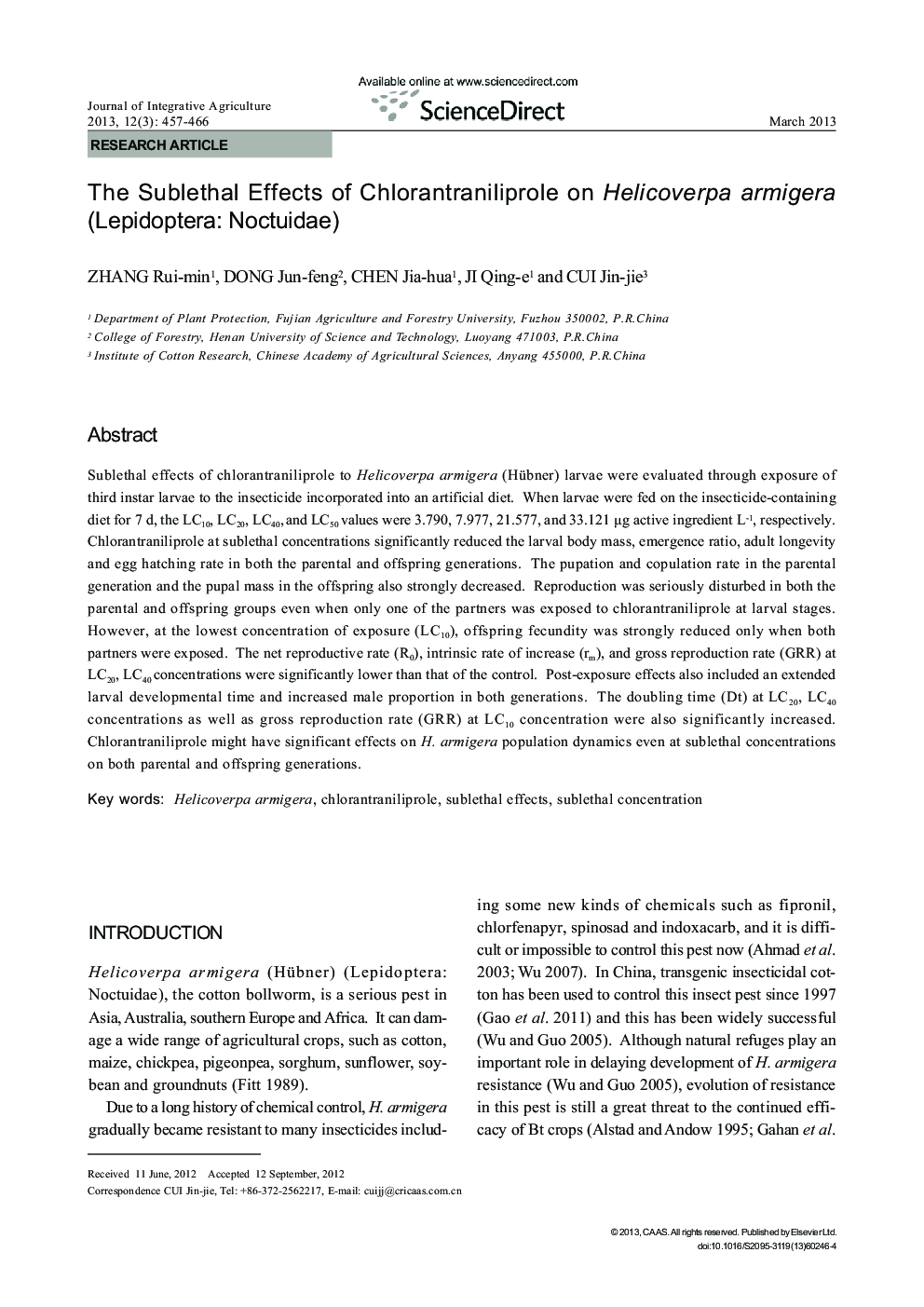| Article ID | Journal | Published Year | Pages | File Type |
|---|---|---|---|---|
| 4494755 | Journal of Integrative Agriculture | 2013 | 10 Pages |
Sublethal effects of chlorantraniliprole to Helicoverpa armigera (Hbner) larvae were evaluated through exposure of third instar larvae to the insecticide incorporated into an artificial diet. When larvae were fed on the insecticide-containing diet for 7 d, the LC10, LC20, LC40, and LC50 values were 3.790, 7.977, 21.577, and 33.121 μg active ingredient L−1, respectively. Chlorantraniliprole at sublethal concentrations significantly reduced the larval body mass, emergence ratio, adult longevity and egg hatching rate in both the parental and offspring generations. The pupation and copulation rate in the parental generation and the pupal mass in the offspring also strongly decreased. Reproduction was seriously disturbed in both the parental and offspring groups even when only one of the partners was exposed to chlorantraniliprole at larval stages. However, at the lowest concentration of exposure (LC10), offspring fecundity was strongly reduced only when both partners were exposed. The net reproductive rate (R0), intrinsic rate of increase (rm), and gross reproduction rate (GRR) at LC20, LC40 concentrations were significantly lower than that of the control. Post-exposure effects also included an extended larval developmental time and increased male proportion in both generations. The doubling time (Dt) at LC20, LC40 concentrations as well as gross reproduction rate (GRR) at LC10 concentration were also significantly increased. Chlorantraniliprole might have significant effects on H. armigera population dynamics even at sublethal concentrations on both parental and offspring generations.
